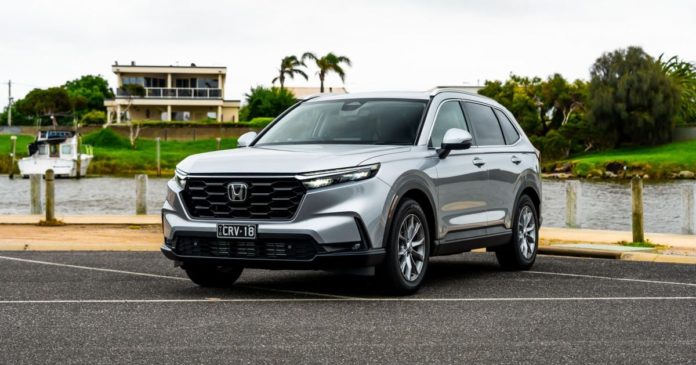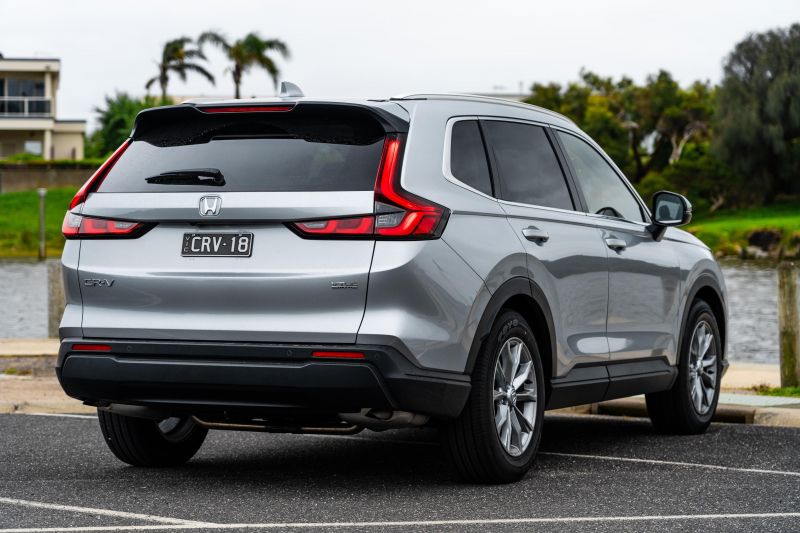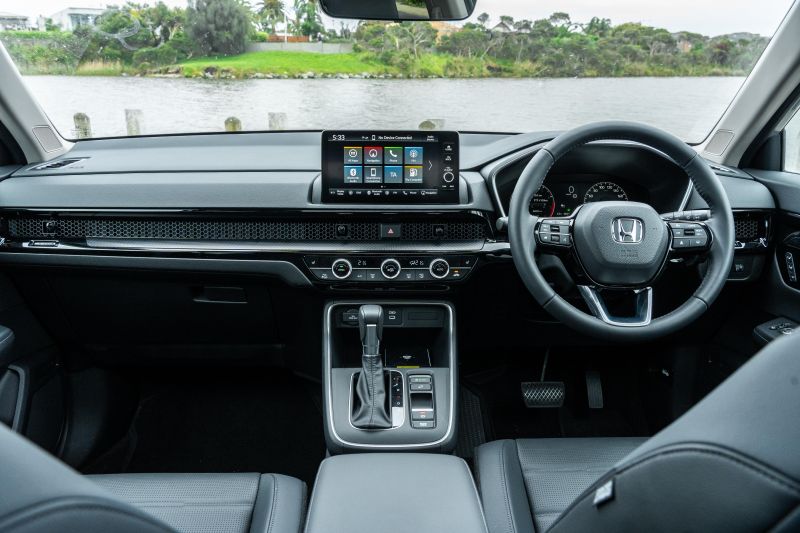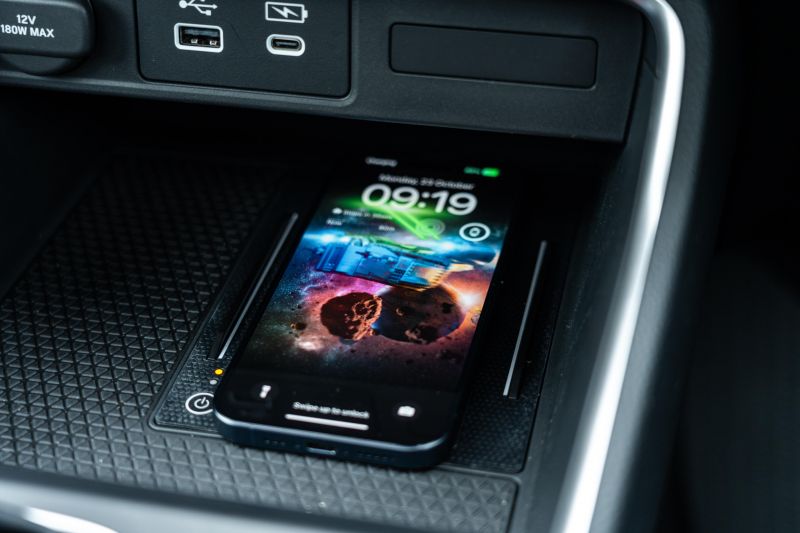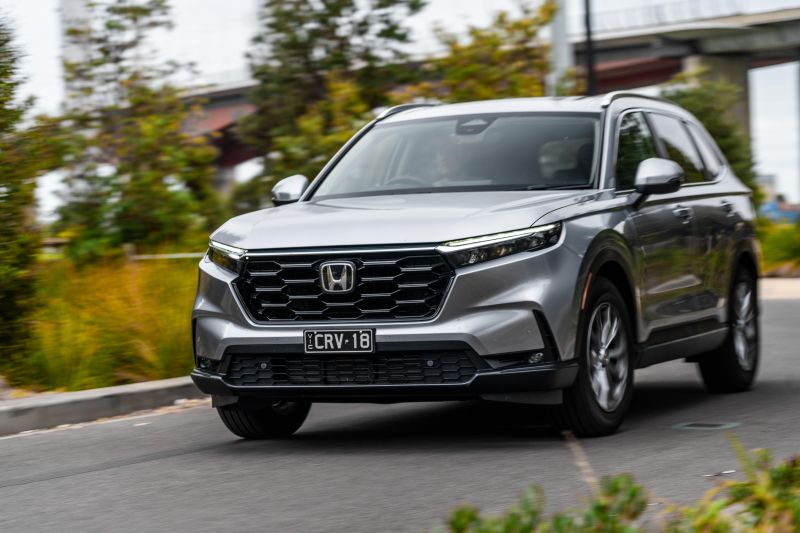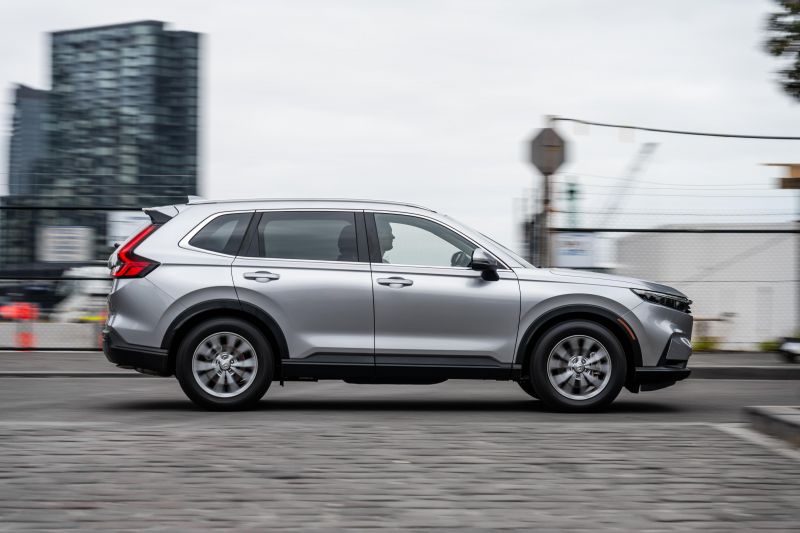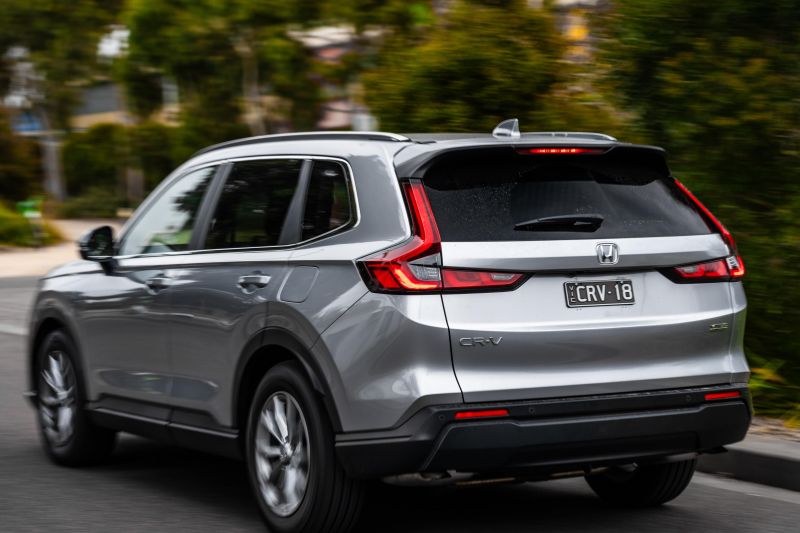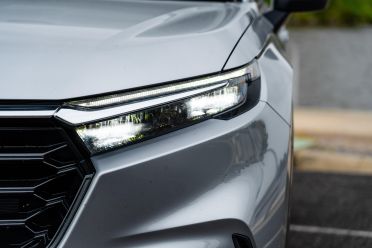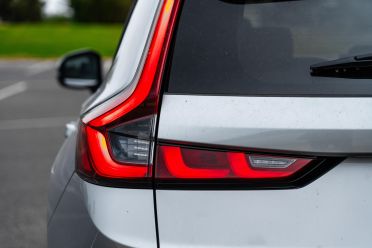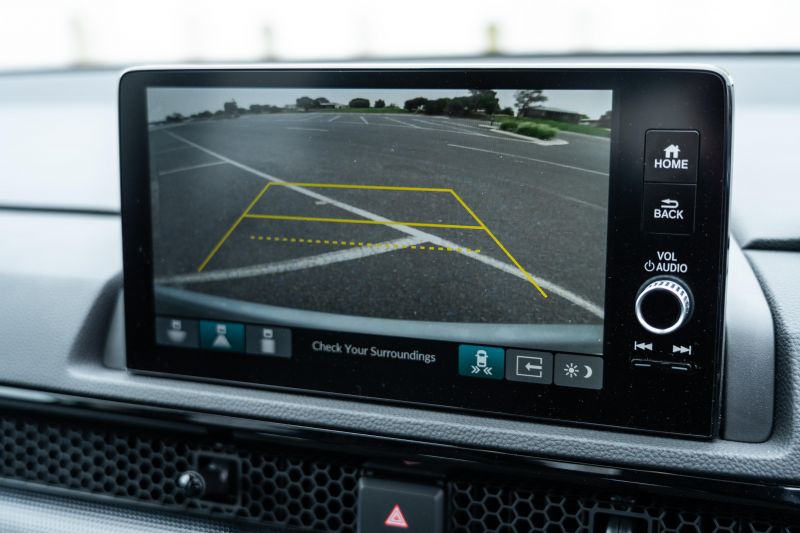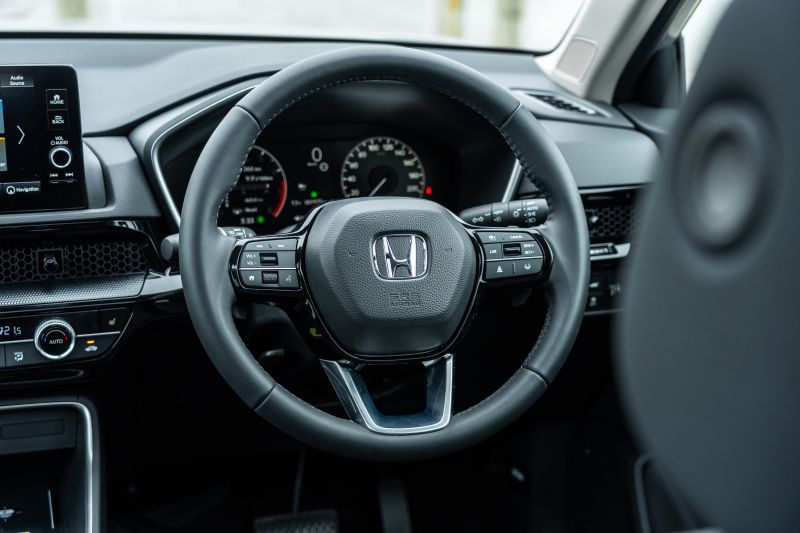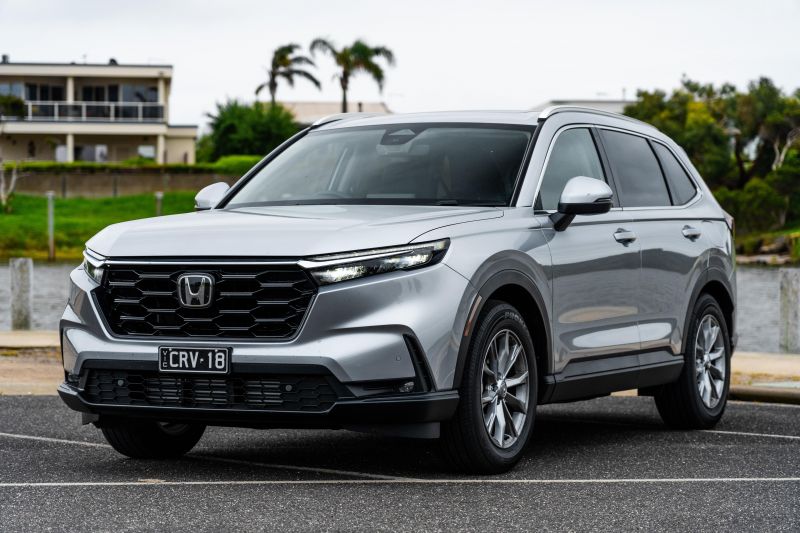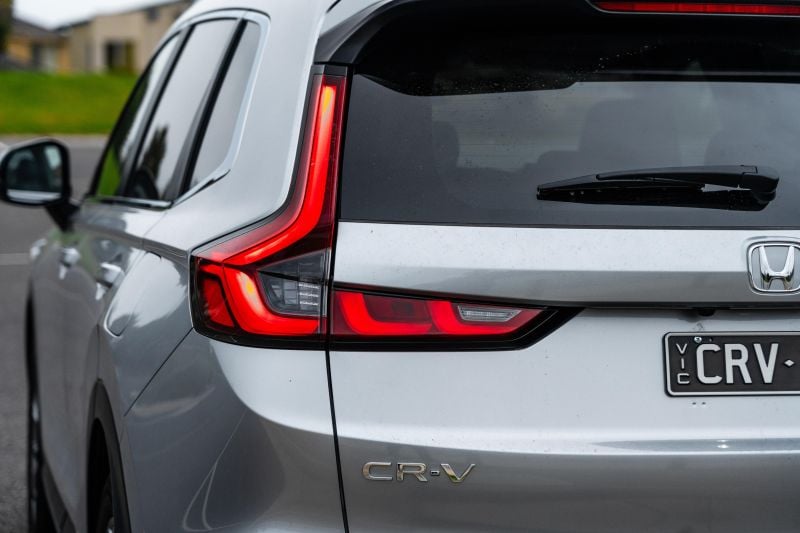The Honda CR-V is back, bigger and better.
With a sharp new look, more modern interior, and a hybrid option for the first time in Australia, a lot has changed. But for all that’s changed, the pitch for the 2024 Honda CR-V VTi L7 on test here is the same.
It’s designed to offer all the luxuries and comforts of a mid-range CR-V, with the added flexibility of two extra seats for days when you’re the designated parent on the school run carpool. Not everyone who needs seven seats wants to drive a bus, after all.
Here’s how it stacks up in the real world.
How does the Honda CR-V fare vs its competitors?
View a detailed breakdown of the Honda CR-V against similarly sized vehicles.
Honda
CR-V
How much does the Honda CR-V VTi L7 cost?
The CR-V VTi L7 is the most expensive seven-seat model in the line-up, with a drive-away price of $53,000.
It’s $6200 more expensive than the base VTi X7, although it’s still comfortably less expensive than the five-seat range toppers in the same range.
Rivals include the Mitsubishi Outlander Aspire seven-seater ($47,340), the Nissan X-Trail ST-L AWD seven-seater ($46,790 before on-roads). The Volkswagen Tiguan Allspace Life 132TSI ($49,990) is also a rival.
Honda CR-V pricing:
- 2024 Honda CR-V VTi X: $44,500
- 2024 Honda CR-V VTi X7: $46,800
- 2024 Honda CR-V VTi L: $48,800
- 2024 Honda CR-V VTi L AWD: $51,300
- 2024 Honda CR-V VTi L7: $53,000
- 2024 Honda CR-V VTi LX AWD: $57,000
- 2024 Honda CR-V e:HEV RS: $59,900
All prices are drive-away
What is the Honda CR-V VTi L7 like on the inside?
The new CR-V has taken a huge leap forward relative to its predecessor.
It’s better to look at, has significantly better technology, and is more spacious than before, in keeping with the new HR-V, Civic, and ZR-V.
The dashboard is simple, but manages to still look interesting thanks in large part to the hexagonal latticework running its width, and covering the air vents. It’s not finished in silver like on the Civic, but it’s still a nice touch.
There are proper climate controls instead of the hybrid dial and touchscreen system that featured before.
Not only is it easier to use, the knurled dials make a lovely little click as you adjust the temperature, playing into the feeling this is a more premium car than before.
The transmission selector is also the perfect height to use as a wrist rest when you’re operating them, which is no accident.
The CR-V has a 9.0-inch display running in-house software, and it’s a massive leap forward. It’s modern to look at, with crisp graphics and simple, slick menus.
The maps finally look like an OEM product rather than an aftermarket system, although the wireless smartphone mirroring means you can easily sidestep the inbuilt software anyway.
Even the reversing camera is sharp and bright, unlike the foggy unit from the last car. Over-the-air updates mean the system can be updated throughout its life, too.
The front seats are all-day comfortable, with lovely soft cushions and just enough bolstering. The view out of the tall windows is palatial, and all the ergonomics are excellent – everything you need to touch is within easy reach.
There’s plenty of storage in the large, central storage bin, along with the dual cupholders and under-dashboard tray.
Rear seat space was a mixed bag in the last CR-V. Legroom was always a strong suit, but models with a sunroof always struggled for headroom back there.
The new model fixes that problem, but maintains handy touches like a low sill and large doors that open 90 degrees.
The rear bench is broad enough to comfortably seat three kids, and the low, flat floor is a positive. Air vents, USB ports, and a fold-down central armrest also feature. The bench slides to free up more rear legroom.
Access to the third row is easy enough, thanks to the tumbling and sliding second row of seats. It’s still more aimed at occasional use than full-time service, but once you’re back there the third row is an improvement over the last car.
The roof-mounted air vents are welcome in summer, and both leg- and headroom are acceptable for children or small teenagers.
Adults will feel very cramped back there, but there’s enough space to get you from bar-to-bar when the CR-V inevitably hits Uber XL fleets.
Boot space behind the third row is limited to 150 litres. You’ll get a couple of shopping bags in there, but not much more – and Honda has persisted with the annoying dual-level boot insert panel that gives you a flat floor, but is hard to store or hide.
On the plus side, the 1457 litres of boot space on offer with both the third and second rows folded is a properly flat space.
What’s under the bonnet?
CR-V VTi models use a 1.5-litre turbocharged four-cylinder petrol engine shared with the smaller ZR-V and Civic.
In the CR-V, the four-cylinder turbocharged engine generates 140kW (6000rpm) and 240Nm (1700-5000rpm).
Drive is sent to the front wheels as standard via a continuously-variable transmission (CVT), with on-demand all-wheel drive (AWD) available as a cost option for the VTi L and as standard for the high-grade VTi LX.
Claimed fuel economy on the combined cycle is 7.3 litres per 100km, but we saw 8.5 litres per 100km on a mixed city and highway loop. It’s incredibly economical on the open road, with the onboard trip computer dropping into the 6.0L/100km range at times, but that figure quickly creeps up in town.
The fuel tank holds 57 litres and drinks 91 RON regular unleaded petrol.
How does the Honda CR-V VTi L7 drive?
Longer and wider than before, the new CR-V feels like a more grown up step on from its predecessor.
The turbocharged petrol engine fires quietly when you prod the start button, and generally does its work in the background. If you’re just keeping up with traffic it’s quiet, humming away between 1500 and 3000rpm and offering a decent shove in the back.
Really put your foot down and it needs to work a bit harder, making more noise as the revs flare. Honda’s transmission is a smart CVT, mimicking a traditional automatic when you bury the accelerator by revving all the way to redline and then faking an upshift, but it can’t hide the fact this is a small engine powering a big car at times.
With seven people on board it’ll be working hard, especially at 100km/h. With four up and their luggage it gets the job done – and it’s a punchier performer than the naturally aspirated engines on offer in the rival Nissan X-Trail or Mitsubishi Outlander.
With light steering and excellent all-round visibility, the CR-V is easy to drive in the city.
The 18-inch wheels on this model don’t ruin the ride, instead allowing the car to float along pockmarked urban roads.
There’s no sporting pretence about it, which is a good thing – but Honda hasn’t turned the CR-V into a floaty barge. It still feels nicely tied down, controlling its mass in one clean movement over big speed bumps or crests.
It’s impressively polished at highway speeds. The ride remains excellent, although there’s a bit more road noise than is ideal on anything less than perfect tarmac. It’s a common complaint we have about Honda products, and is the only real knock on its refinement.
Honda’s driver assists are smartly tuned. The adaptive cruise control neatly maintains a gap to the car in front, and the active lane-centring system is smooth when it does decide to nudge you back into line.
Moving away from the old LaneWatch camera system and fitting a blind-spot monitoring light is a step forward as well.
As for the handling? The CR-V is actually reasonable fun to throw around, if that’s a priority in your family car. It still has plenty of body roll, but it doesn’t want to fall over in corners like some of its rivals.
What do you get?
CR-V VTi X highlights:
- LED headlights
- 17-inch alloy wheels
- Full-size alloy spare wheel
- Hands-free power tailgate
- 90-degree rear doors
- Premium Fabric seat upholstery
- 8-way power driver seat
- Dual-zone climate control
- Conversation Mirror
- 7.0-inch driver display
- 9.0-inch touchscreen infotainment system
- Honda Connect
- Wireless Apple CarPlay
- Wired Android Auto
- 8-speaker audio system
- Wireless phone charger
CR-V VTi X7 adds:
- 7 seats
- Blind-spot monitoring
- Rear cross-traffic alert
- Space saver spare wheel
- Tri-zone climate control
CR-V VTi L7 adds (over VTi X7):
- Panoramic sunroof
- 18-inch alloy wheels
- Privacy glass
- Satellite navigation
- Smart Key Card
- i-Dual + tri-zone climate control
- Leather-appointed seats, black
- Heated front seats
- Driver memory function (2 positions)
- 4-way power passenger seat
- Leather-wrapped steering wheel
- Leather-wrapped shifter
- Rain-sensing wipers
Is the Honda CR-V VTi L7 safe?
The new Honda CR-V is yet to be tested by ANCAP and Euro NCAP.
Standard safety features include:
- 11 airbags
- Honda Sensing
- Forward collision warning
- Collision mitigation braking system (AEB)
- Lane departure warning
- Lane keep assist
- Road Departure Mitigation System
- Adaptive cruise control
- Low Speed Follow
- Traffic Jam Assist
- Low Speed Braking Control
- Traffic sign recognition
- Auto high-beam
- Parking sensors front, rear
CR-V VTi X7 + VTi L add:
- Blind-spot monitoring
- Rear cross-traffic alert
CR-V e:HEV RS adds:
- LED active cornering lights
- Adaptive Driving Beam (headlights)
How much does the Honda CR-V VTi L7 cost to run?
Honda Australia covers its range with a five-year, unlimited-kilometre warranty.
There’s also premium roadside assist for the same period, as well as five years of capped-price servicing.
Honda is currently capping scheduled maintenance at $199 per visit for the first five scheduled services for new models. Intervals are 12 months or 10,000 kilometres – whichever comes first.
CarExpert’s Take on the Honda CR-V VTi L7
Honda has fixed most of what was wrong with the last CR-V, and built on its strengths in the process.
The new interior is more spacious and luxurious than before, and it finally has an up-to-date technology suite in line with what its big rivals can offer.
We’ve also been hard on Honda for its pricing, but the VTi L7 represents excellent value.
The only caveat? If you need all-wheel drive, there’s no ability to combine a seven-seat interior with anything but front-wheel drive.
If you can live with front-wheel drive though, the CR-V is up there with the class leaders.
Click the images for the full gallery
MORE: Everything Honda CR-V

